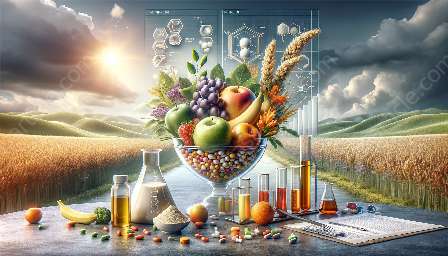Nutrient metabolism in aquatic species is a complex and crucial biological process that supports the survival and growth of a vast array of organisms living in water environments. From fish and crustaceans to aquatic plants, each species has unique nutritional needs, digestive capabilities, and metabolic pathways that contribute to their overall health and well-being.
The Importance of Understanding Nutrient Metabolism in Aquatic Species
As a vital component of aquatic animal nutrition and nutrition science, the study of nutrient metabolism in aquatic species is essential for several reasons:
- Understanding the specific nutritional requirements of different aquatic species enables the development of tailored feed formulations that support optimal growth, reproduction, and overall health.
- Insight into nutrient metabolism pathways in aquatic organisms can aid in addressing challenges such as nutrient deficiencies, imbalances, and waste management in aquaculture systems.
- Advancements in understanding nutrient metabolism can lead to the development of sustainable and environmentally friendly aquafeed production techniques, reducing the ecological impact of fish and shrimp farming.
Key Processes in Nutrient Metabolism
1. Digestion and Absorption: Aquatic species possess specialized digestive systems that vary widely depending on their feeding habits and ecological niches. For example, herbivorous fish and invertebrates, such as tilapia and shrimp, have evolved digestive tracts suited for breaking down plant materials, while carnivorous species, like salmon and trout, have shorter and more acidic digestive systems optimized for processing high-protein diets. The efficiency of nutrient absorption in aquatic animals is influenced by factors such as water temperature, diet composition, and gut health.
2. Nutrient Utilization: Once absorbed, nutrients are utilized for energy production, growth, reproduction, and maintenance of physiological functions. Carbohydrates, proteins, and lipids play vital roles in providing energy and building blocks for tissue growth, while vitamins, minerals, and other micronutrients contribute to various metabolic processes and immune function in aquatic organisms.
Aquatic Animal Nutrition and Feed Formulation
The principles of nutrient metabolism in aquatic species guide the formulation of complete and balanced diets for commercially important species reared in aquaculture settings. Aquafeed manufacturers consider the specific nutrient requirements, digestibility of feed ingredients, and sustainable sourcing of raw materials to create nutritionally optimized diets that promote the well-being of farmed fish, shrimp, and other aquatic organisms.
Advancements in Aquatic Animal Nutrition Research
Ongoing research in aquatic animal nutrition and nutrition science continues to shed light on the complexities of nutrient metabolism in aquatic species and drives innovation in the following areas:
- Functional Feed Additives: Scientists are exploring the use of bioactive compounds, probiotics, prebiotics, and immunostimulants to enhance nutrient utilization, disease resistance, and overall performance in aquaculture species.
- Alternative Protein and Lipid Sources: With a focus on sustainability, researchers are investigating novel protein and lipid sources derived from plant-based, insect-based, and microbial sources to reduce reliance on marine-derived ingredients for aquafeed production.
- Nutrigenomics and Nutritional Physiology: The integration of genomic and physiological approaches allows for a deeper understanding of how nutrients influence gene expression, metabolic pathways, and physiological responses in aquatic species, opening new avenues for precision nutrition in aquaculture.
Conclusion
The intricate world of nutrient metabolism in aquatic species serves as a cornerstone in the fields of aquatic animal nutrition and nutrition science, offering a dynamic platform for innovation, sustainability, and the improvement of aquaculture practices. By delving into the unique nutrient requirements, digestion, absorption, and utilization patterns of diverse aquatic organisms, researchers and industry professionals continue to shape the future of aquatic animal nutrition, nourishing the world's growing population with valuable protein sources from the depths of our oceans, rivers, and lakes.

